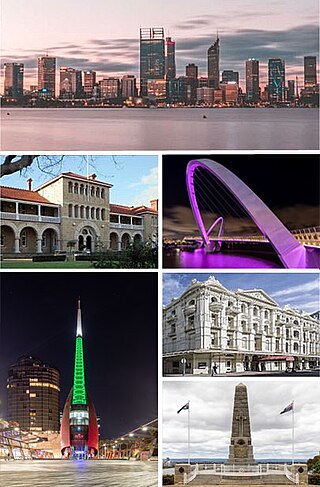Квонган
Квонган — форма пустоши. Экорегион юго-запада Австралии. Тянется вдоль береговой линии от Кабо-Натуралист (Cape Naturaliste) до Перта. Несмотря на столь значительную протяжённость, большая часть квонгана уничтожено.
Этимология
Название «квонган» взято из языка племени нунгар.
География
Квонган содержит богатую растительностью пустошь с густыми зарослями склерофитовых кустарников, встречаются также изолированные небольшие деревья. Также для квонгана характерны песчаная почва (в которой мало питательных веществ), частые натуральные пожары, очень высокий уровень эндемичности, разнообразие местных растений. Климат для этой местности близок к средиземноморскому: для зимнего периода обычны частые проливные дожди, лето жаркое и сухое.
Квонган имеет сходство с средиземноморским маквисом, калифорнийской чапаралью, чилийской маторралью и финбошом из Южной Африки[1].
Литература
- Beard, J.S. 1976. An indigenous term for the Western Australian sandplain and its vegetation. Journal of the Royal Society of Western Australia 59, 55-57.
- Beard, J.S., Pate, J.S. 1984. Foreword: Kwongan – Plant Life of the Sandplains. Pp xvii-xxi in J.S. Pate & J.S. Beard, eds. Kwongan—Plant Life of the Sandplain. University of Western Australia Press, Ned-lands
- Bindon, P., Chadwick, R., eds. 1992. A Nyoongar wordlist from the south-west of Western Australia. Western Australian Museum, Perth.
- Brooke, J.P. 1896. Natural features of Israelite Bay. Proceedings Australasian Association for the Advancement of Science 6, 561-569.
- Dench, A. 1994. Nyungar. pp. 173–192 in N. Thieberger & W. McGregor, eds, Macquarie Aboriginal Words. The Macquarie Library, Macquarie University, NSW.
- Diels, L. 1906. Die Pflanzenwelt von West-Australien südlich des Wendekreises. Vegn. Erde VIII. Leipzig.
- Douglas, W.H. 1976. The Aboriginal languages of the southwest of Australia. 2nd ed. Australian Institute of Aboriginal Studies, Canberra
- Drummond, J. 1839. Hookers Journal of Botany 2, 307, 356.
- Erickson, R. 1969. The Drummonds of Hawthornden. Lamb Paterson, Osborne Park WA.
- Eyre, E.J. 1845. Journals of expeditions of discovery into central Australia and overland from Adelaide to King George's Sound in the years 1840-1. T. & W. Boone, London.
- Gardner, C.A. 1942. The vegetation of Western Australia with special reference to climate and soils. Journal of the Royal Society of Western Australia 28, 11-87.
- Hercock, M., Milentis, S., Bianchi, P. 2011. Western Australian Exploration 1836 – 1845. Hesperian Press, Victoria Park.
- Hopper, S.D. 2009. OCBIL theory: towards an integrated understanding of the evolution, ecology and conservation of biodiversity on old, climatically-buffered, infertile landscapes. Plant and Soil 322, 49-86.
- Hopper, S.D., Gioia, P. 2004. The Southwest Australian Floristic Region: evolution and conservation of a global hotspot of biodiversity. Annual Review of Ecology, Evolution and Systematics 35, 623-650.
- Lambers, H. (ed.) (2014) "Plant Life on the Sandplains in Southwest Australia, a Global Biodiversity Hotspot". UWA Publishing, Crawley.
- Moore, G.F. (1842). A descriptive vocabulary of the language in common use amongst the Aborigines of Western Australia; with copious meanings, embodying much interesting information regarding the habits, manners, and customs of the natives, and the natural history of the country. William S. Orr and Co., London. Reprinted 1884.
- Moule, M. 2009. A reliable mass propagation system for Ravensthorpe Radish (Platysace deflexa). Centre for Natural Resource Management, The University of Western Australia, Albany.
- Pate, J.S.; & Beard, J.S. (eds). (1984). Kwongan: Plant Life of the Sandplain. Biology of a south-west Australian shrubland ecosystem. University of Western Australia Press: Perth. ISBN 0-85564-228-9
Примечания
- ↑ National Geographic Ecoregion Profiles: Kwongan heathlands. Дата обращения: 17 января 2010. Архивировано из оригинала 8 февраля 2010 года.













